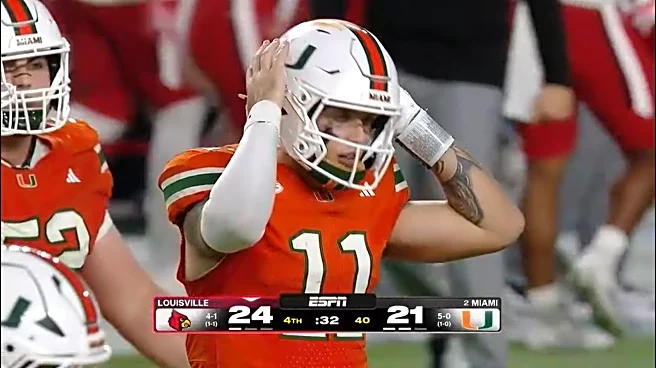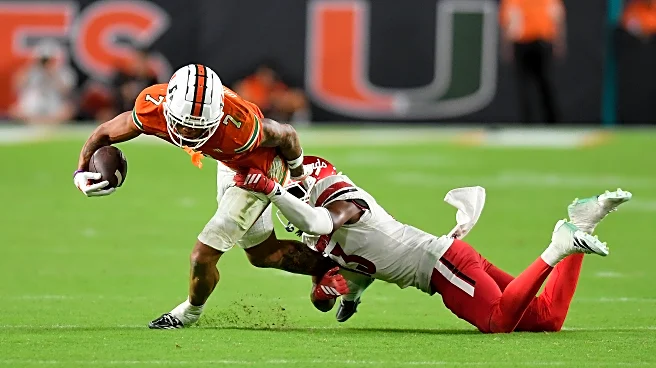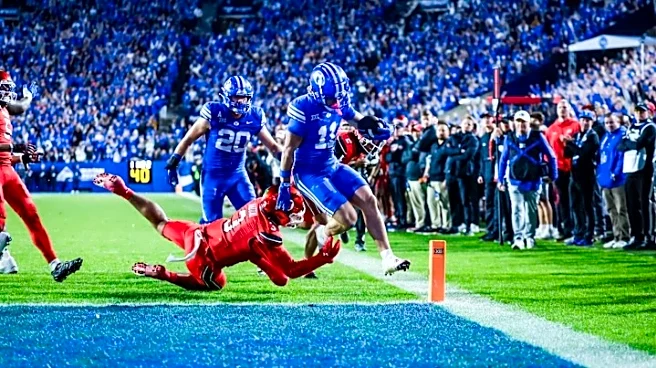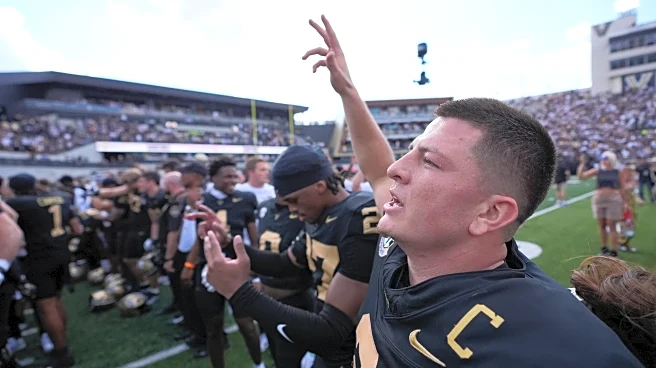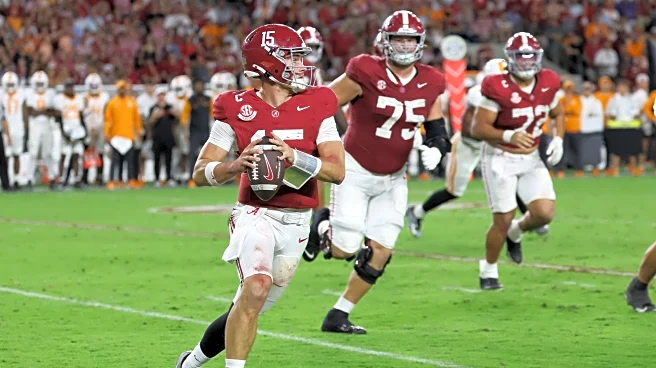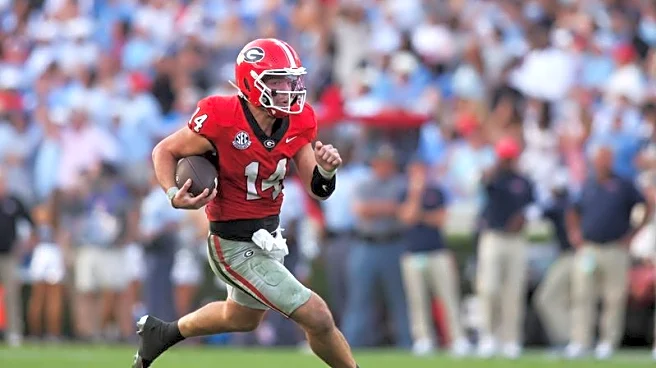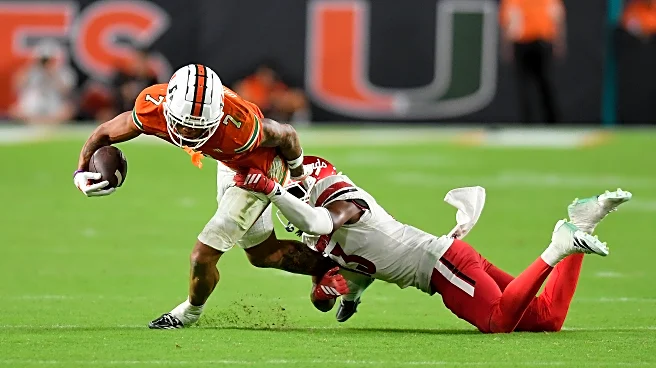What's Happening?
The Heisman Trophy race in college football has seen significant shifts, with Julian Sayin emerging as a new favorite following a standout performance against Wisconsin. Sayin, a quarterback for Ohio State,
delivered 393 yards and four touchdowns, boosting his position in the Heisman rankings. Meanwhile, Carson Beck's four-interception game against Louisville has caused him to drop from the top contenders. Other quarterbacks like Fernando Mendoza from Indiana and Ty Simpson from Alabama remain steady in the top three. The Heisman race has been volatile, with eight different frontrunners over eight weeks, reflecting the competitive nature of this season.
Why It's Important?
The Heisman Trophy is one of the most prestigious awards in college football, and its race often influences player visibility and future NFL prospects. The emergence of new frontrunners like Sayin highlights the dynamic nature of college football, where performances can rapidly alter rankings. This volatility impacts betting markets and fan engagement, as each week brings new potential favorites. The shifting dynamics also underscore the importance of consistent performance and the pressure on players to maintain high standards throughout the season.
What's Next?
As the season progresses, the Heisman race will continue to evolve, with upcoming games serving as critical opportunities for players to solidify their standings. Key matchups, such as Ohio State's game against Michigan, will be pivotal in determining the final contenders. Players like Sayin will need to maintain their performance levels to stay in contention, while others like Beck will aim to recover and re-enter the race. The ongoing competition will keep fans and analysts engaged, with each game potentially reshaping the Heisman landscape.
Beyond the Headlines
The Heisman race reflects broader trends in college football, including the increasing emphasis on quarterback performance and offensive efficiency. The focus on quarterbacks highlights the evolving strategies in college football, where passing plays and quarterback leadership are crucial. This shift may influence recruitment and training practices, as teams prioritize developing strong quarterbacks to compete at the highest levels. The race also underscores the unpredictability of sports, where individual performances can dramatically alter outcomes.


